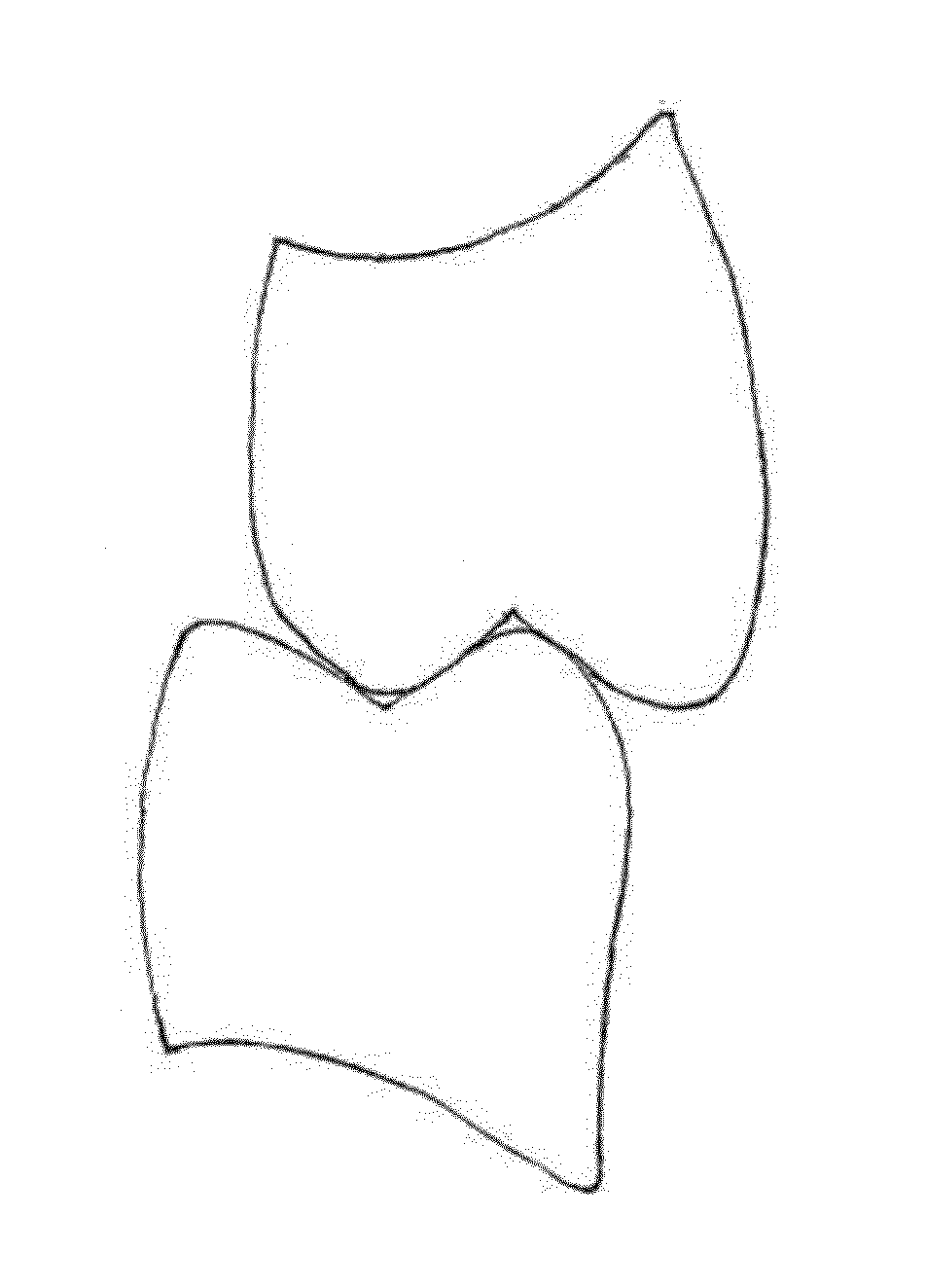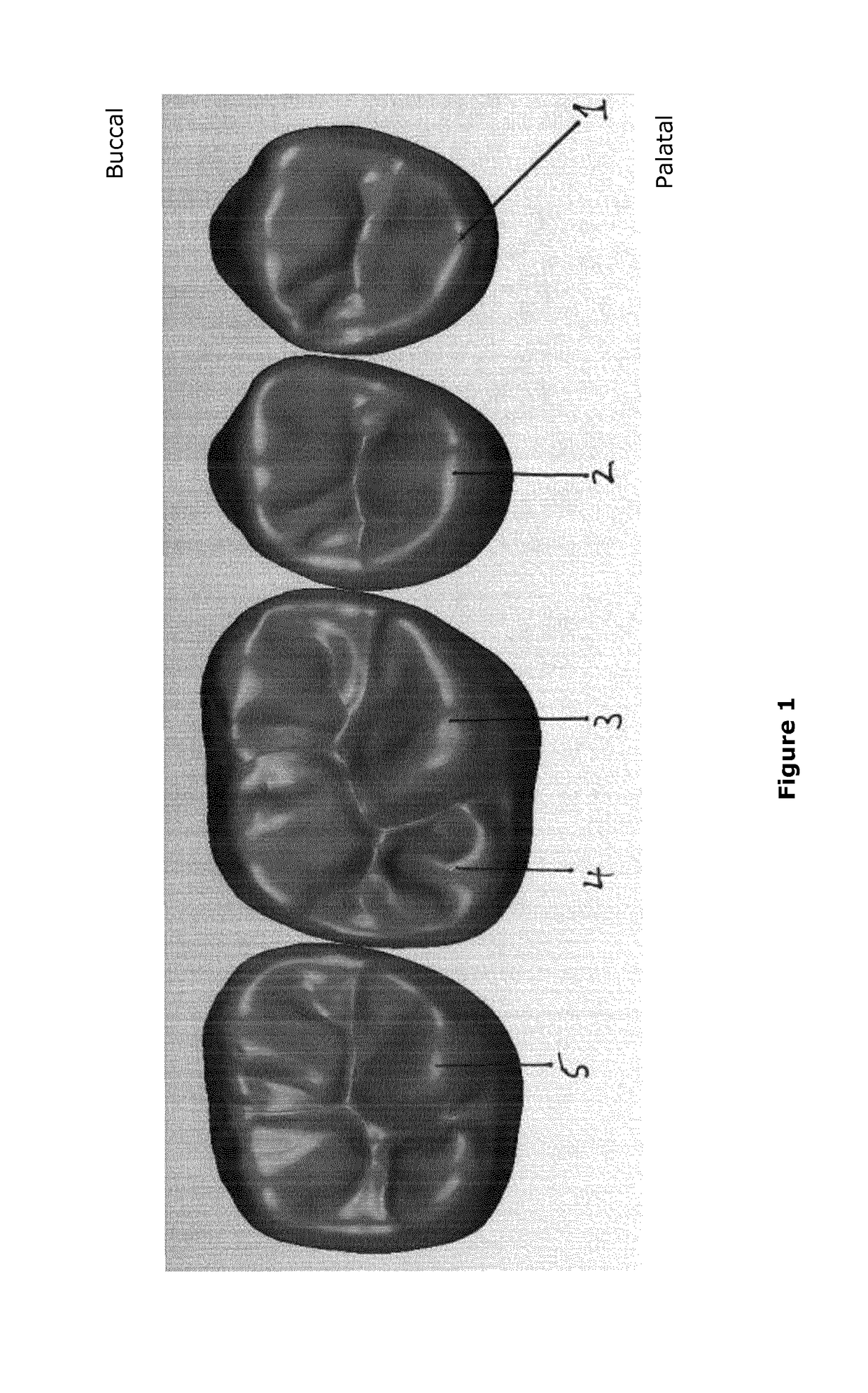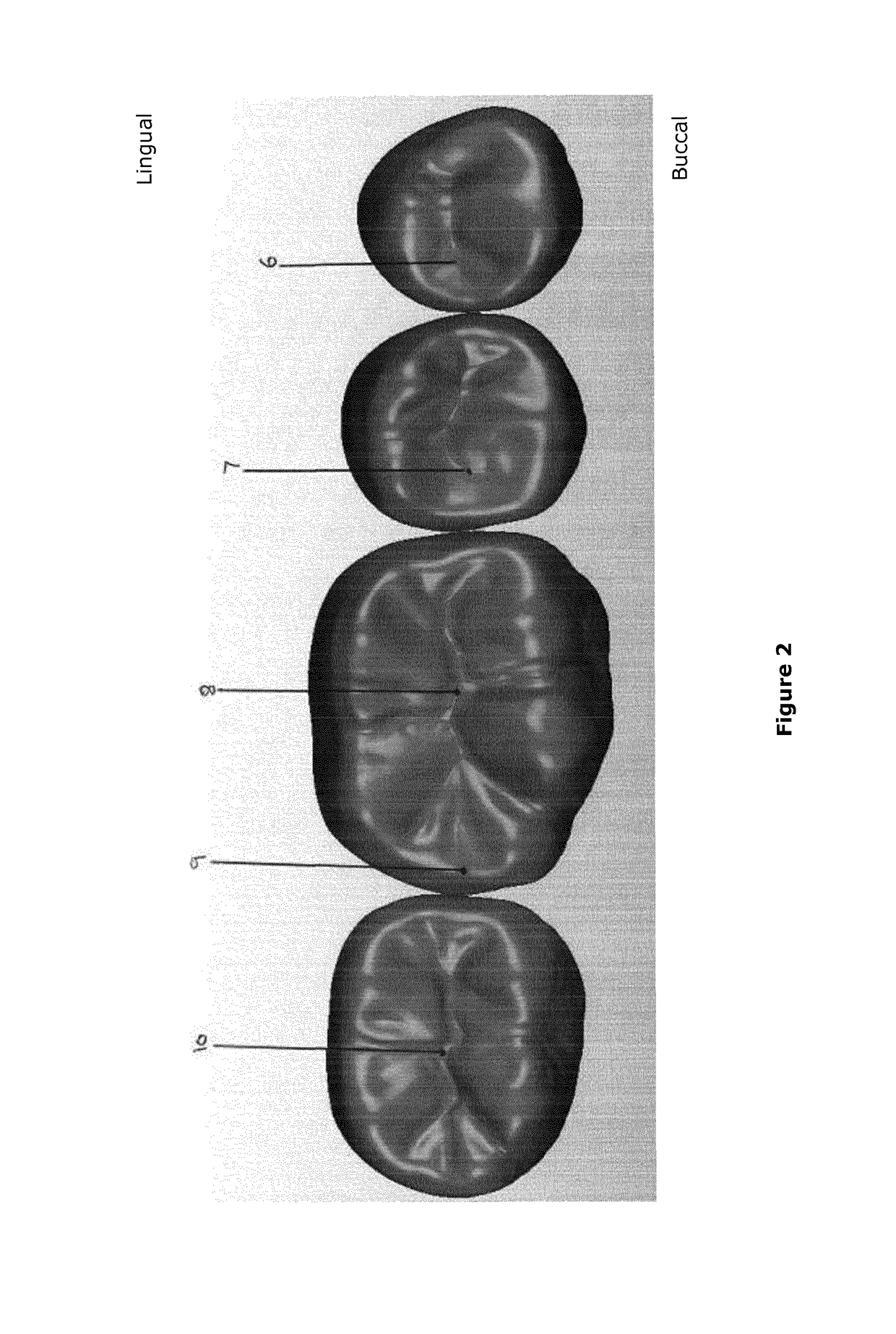Artificial teeth
a technology of artificial teeth and teeth, applied in the field of artificial teeth, can solve the problem of no provision in any document for a single set of artificial teeth that can be simply changed
- Summary
- Abstract
- Description
- Claims
- Application Information
AI Technical Summary
Benefits of technology
Problems solved by technology
Method used
Image
Examples
Embodiment Construction
[0055]The present invention provides a set of artificial teeth comprising a maxillary unit and a mandibular unit in which, when set up in lingualised occlusion, at least one of following occurs: the palatal cusp of the upper 4 (1) fits into the distal fossa of the lower 4 (6), the palatal cusp of the upper 5 (2) fits into the distal fossa of the lower 5 (7), the mesial palatal cusp of the upper 6 (3) fits into the central fossa of the lower 6 (8), the distal palatal cusp of the upper 6 (4) fits onto the marginal ridge of the lower 6 (9) and the mesial palatal cusp of the upper 7 (5) fits into the central fossa of the lower 7 (10), and wherein the buccal cusps of the lower teeth are out of contact with the upper teeth, such that the cusp / fossa dimensions and relationships of the teeth concerned enable the occlusal scheme for the teeth to be changed from lingualised to balanced occlusion simply by softening the wax or resin under the upper posterior teeth and rotating the upper buccal...
PUM
| Property | Measurement | Unit |
|---|---|---|
| width | aaaaa | aaaaa |
| width | aaaaa | aaaaa |
| width | aaaaa | aaaaa |
Abstract
Description
Claims
Application Information
 Login to View More
Login to View More - R&D
- Intellectual Property
- Life Sciences
- Materials
- Tech Scout
- Unparalleled Data Quality
- Higher Quality Content
- 60% Fewer Hallucinations
Browse by: Latest US Patents, China's latest patents, Technical Efficacy Thesaurus, Application Domain, Technology Topic, Popular Technical Reports.
© 2025 PatSnap. All rights reserved.Legal|Privacy policy|Modern Slavery Act Transparency Statement|Sitemap|About US| Contact US: help@patsnap.com



